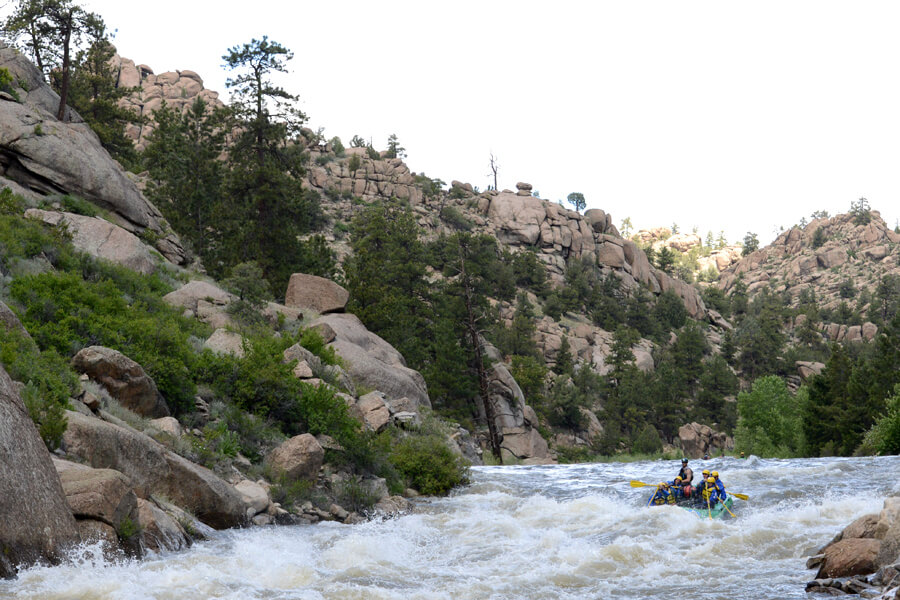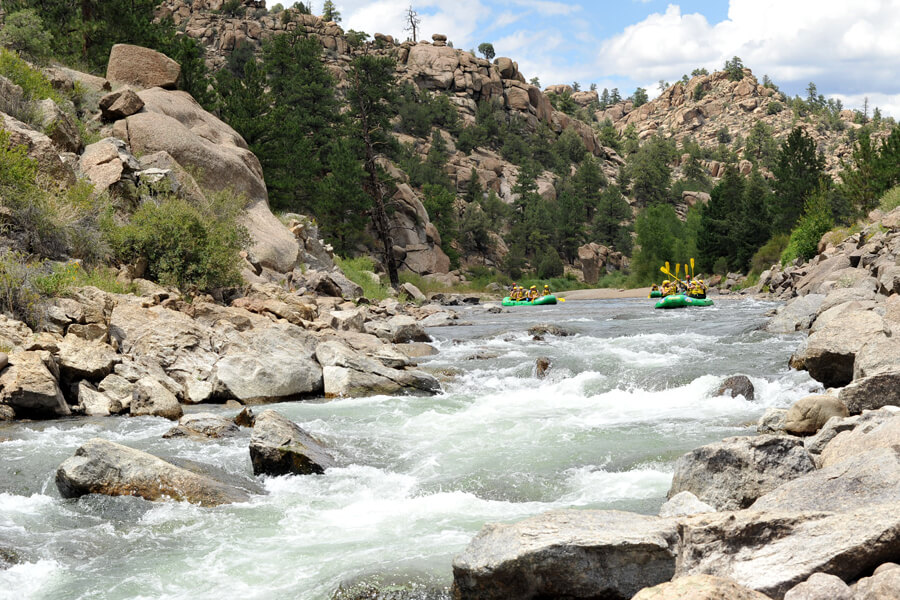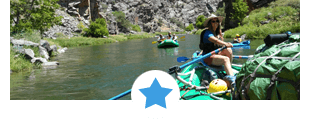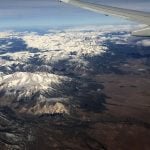Why CFS Matters
CFS or Cubic Feet per Second is the unit of measurement used for determining the “speed” of a river. Pay attention to this number when booking your trip as you soon will learn, water levels make a BIG difference on your whitewater rafting experience!
When I first moved to Buena Vista, I noticed what seemed like an obsession with the mysterious acronym “CFS”. Any mention of my role at Wilderness Aware Rafting, and someone would immediately ask, “What’s the CFS like right now?”. Having never gone whitewater rafting before, “CFS” was a completely foreign term. A trip down one of our most advanced sections of whitewater rafting (The Numbers) on my second day in town, quickly taught me the importance of paying attention to CFS and where the local obsession with CFS levels came from!

Zoom Flume rapid in Browns Canyon at a higher CFS.
I like to think of CFS in as if it were a thermometer. Similar to how a humid 80˚ day is significantly different to a snowy 29˚ day, the range in numbers for CFS is just as impactful. A river during high CFS flows will feature larger rapids, bigger waves, and completely different terrain than from when CFS flows are low. Both conditions have their perks, depending on what you are hoping to get when booking your Colorado whitewater rafting trip!
What to Expect During High CFS
If the rivers are flowing above 2,000 CFS this is officially high water! Woohoo! High water conditions are my favorite time to go rafting. There is much more action and adrenaline charged waves and drops come with every turn of the river. Plan on getting soaked! The higher the CFS, the more advanced the trip, so first time rafters are advised to start with one of our Browns Canyon National Monument trips before taking on the Class V sections that require more technical paddling like The Numbers or Royal Gorge. When rivers are flowing at a faster rate, it is of upmost importance to listen and follow guide commands. Your guide is depending on guests to paddle with full force to compensate for the speed of the river. Higher flows mean less room for error since your guide will have much less time to readjust and maneuver the raft to avoid obstacles if the paddle crew is unable to follow the original route. Typically high CFS flows occur late June – early July when the majority of the snowpack is melting.

Zoom Flume rapid in Browns Canyon at a lower CFS.
What to Expect During Low CFS
While I’m more of an adrenaline junkie, I certainly can appreciate the way my favorite butterfly inducing rapids mellow out during low CFS. A calmer river means more time to relax and enjoy the gorgeous scenery whitewater rafting immerses you in. For first time rafters who are a little nervous about what to expect, I suggest scheduling your trip during low water conditions. The slower pace takes the pressure off remembering whether or not to back-paddle when your guide calls for a left turn. There is more room for readjusting lines and less risk of flipping should you hit an obstacle. Families with small children or those who may not want to paddle have the option of zero paddling on trips as well since we are able to mount oars on our rafts for your guide to row instead. (It’s super easy to arrange, just ask!) If you’re hoping to take a lot of photos, I suggest going during low flows as well. There will be more opportunities since constant paddling is not as necessary as during high flows. Low flows kick off the season starting Memorial Day and last until about mid June, then pick up again mid July – August.
Now that you have a better idea of what to expect, get out there! Call us at 1-800-In A RAFT (1-800-462-7238) or book your Colorado white water rafting adventure online.


